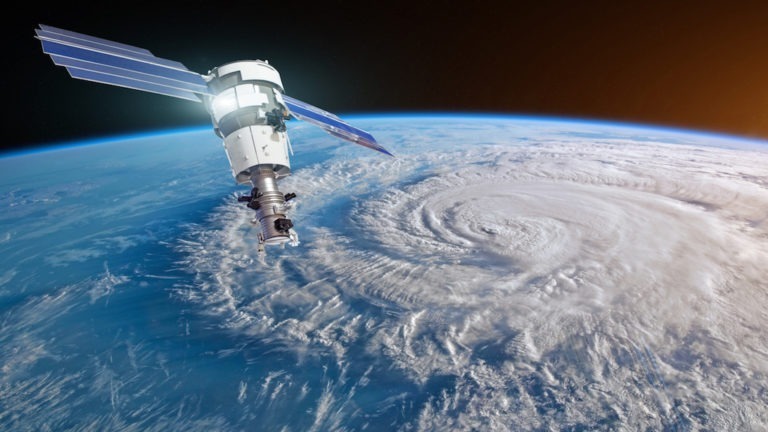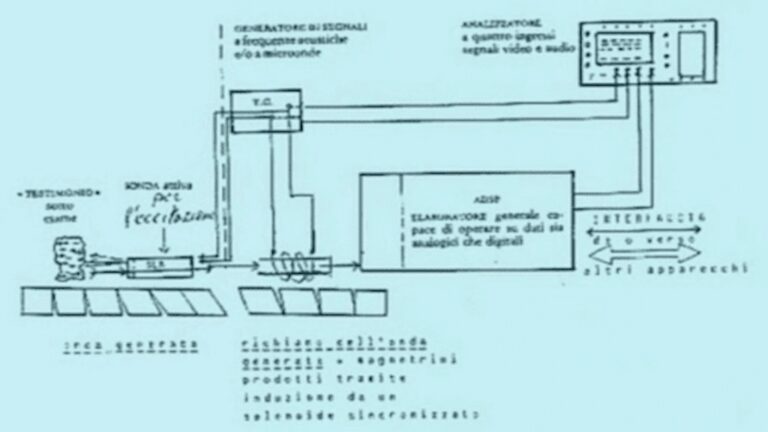5G Tech Could Significantly Impair Weather Forecasting Satellites

Concerns over 5G health risks are coming to a head, and while early adopters and tech junkies want it implemented as quickly as possible, a good percentage of the public is wondering why legislation ensuring radiation safety standards from wireless technology are almost nonexistent.
And now there’s even more reason for trepidation toward 5G, namely that it will set back weather forecasting technology by roughly four decades.
At least that’s according to the National Oceanic and Atmospheric Administration which issued a warning to lawmakers and wireless telecom giants trying to impinge on its satellite radio frequency bandwidth used to monitor our increasingly volatile climate and warn us of impending natural disasters. No big deal.
“The way 5G is being introduced could seriously compromise our ability to forecast major storms,” Tony McNally of the European Center for Medium-Range Weather Forecasts told the Guardian. “In the end it could make the difference between life and death. We are very concerned about this.”
That’s because the FCC offered the 24-GHz frequency band to wireless carriers earlier this year, the same range (23.6 -24 GHz) in which water vapor signals in the atmosphere are picked up by NOAA’s and other agencies’ weather satellites and microwave sounders. According to estimates, allowing 5G to live on this frequency would result in somewhere between a 30 to 77 percent data loss for NOAA satellites and bring our weather prediction capabilities to the same proficiency it had in 1980.
But that’s not all; similar auctions of other frequency bands used to detect snow, ice and clouds are also being scheduled for sale.
The US Navy even weighed in on the situation, saying that interference with this frequency range “will result in a partial-to-complete loss of remotely sensed water-vapor measurements.”
Of course, there seems to be a relatively simple solution to this problem – stricter regulation, a little bit of forethought, and maybe the patience to consult with experts in the field about the potential dangers of these new technologies before we just let our technocratic overlords run footloose and fancy-free.
Now if anyone calls you a Luddite for being apprehensive toward the rash construction of a sweeping 5G network, you have yet another example to give of just how recklessly Big Wireless and the FCC are acting. This doesn’t mean we can’t have nice things, let’s maybe just consider all the potentially negative outcomes before blindly building them.
For more on the dangers of wireless radiation, check out Resonance: Beings of Frequency:
The Chronovisor: The Vatican’s Mysterious Time Travel Device

While many regard H.G. Wells as a genius for inventing the idea of the time machine in his novel, “The Time Machine,” some believe he was revealing a top-secret capability. Since his novel was first published in 1895, thousands of books, articles, and videos have followed, documenting curious accounts of time travel and dimensions beyond the wildest of imaginations.
One of these works, Father François Brune’s 2002 book, “Le Nouveau Mystere du Vatican,” brings a forgotten time-travel device called the Chronovisor, back into the public eye — or at least into the minds of conspiracy theorists.
Brune, who learned of the device in the early 1960s, swears the Chronovisor exists. A day after he met scientist-priest Father Pellegrino Ernetti for the first time, the two were sailing along the Grand Canal of Venice discussing biblical interpretations, when Ernetti explained that theories and interpretations were unnecessary when one could see the truth for himself. He explained to Brune how the Chronovisor functioned, allowing the viewer to see and hear past and future events. The story of his full account is included in Brune’s book.
With a little digging, researchers will find the first mentions of the Chronovisor in a 1972 article published in the Italian magazine “La Domenica del Corriere,” entitled, “A machine that photographs the past has finally been invented.”
What is the Chronovisor and Who Allegedly Created It?
Belonging to the Vatican, the Chronovisor time machine is heralded as one of the papacy’s best-kept secrets. The device is said to be replete with three precious alloys, cathodes, dials, and levers, and it can display myriad historical events in biblical and Roman history. Acting as a sort of television, the Chronovisor has even supposedly verified the existence of Jesus Christ and broadcast his crucifixion.
The Chronovisor time machine is claimed to have been invented in the 1950s by a dedicated and secret team of Italian scientists, including physicists Enrico Fermi and Pellegrino Ernetti. Critics may take credibility issues with the fact that Ernetti, a Benedictine monk, eventually became a Catholic priest and a working exorcist.

However, Enrico Fermi’s reputation is nothing to scoff at. He was awarded the Nobel Prize for Physics in 1938 “for his demonstrations of the existence of new radioactive elements produced by neutron irradiation and for his related discovery of nuclear reactions brought about by slow neutrons.”



































